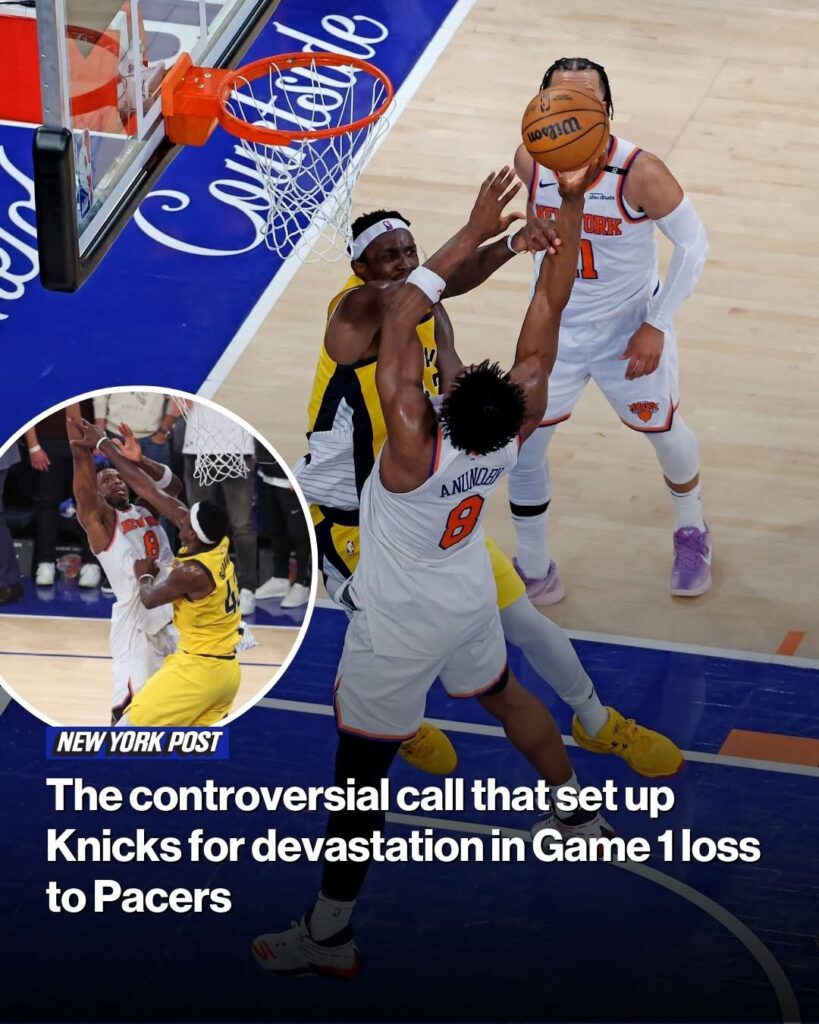On the TNT broadcast, analyst Stan Van Gundy was convinced the contact after Anunoby lost the ball was severe enough that it deserved to be called a foul — and noted that the length of the replay was proof there was no clear evidence to overturn it…..Read more:
In a tightly contested playoff matchup, a crucial moment involving OG Anunoby sparked heated debate across the NBA landscape. The play in question occurred late in the fourth quarter when Anunoby appeared to lose control of the ball during a drive to the basket. As the defense collapsed around him, Anunoby went to the floor following significant contact from a defending player. Officials initially ruled it a no-call, letting play continue. However, after a brief pause, the officiating crew initiated a lengthy replay review to determine whether the contact warranted a foul or whether the call on the floor should stand.
Throughout the broadcast, TNT analyst Stan Van Gundy was unequivocal in his belief that the contact Anunoby suffered warranted a foul. Van Gundy, known for his straightforward and candid commentary, dissected the play frame by frame, pointing out what he described as “clear and significant” body contact that affected Anunoby’s ability to finish the play. “If you’re not calling this a foul,” Van Gundy stated emphatically, “then I don’t know what is.” His comments came as viewers watched the slow-motion replay that showed Anunoby being bumped off balance as he reached for the loose ball.
Van Gundy’s analysis didn’t stop there. He emphasized that the sheer length of the review process was indicative of the officials’ uncertainty and the complexity of the situation. “Look,” he said during the broadcast, “they’ve been looking at this for three minutes. If there were clear evidence to overturn or support the call, they’d be done by now. The fact that this is taking so long tells you everything—you can’t tell me that’s not a foul if it needs this much scrutiny.” His remarks resonated with many fans on social media, with some praising his candor and others questioning the league’s officiating consistency.
The incident quickly became one of the focal points of post-game discussion. Coaches and players were more measured in their responses, though there was a clear undercurrent of frustration from Anunoby’s team. When asked about the play, the head coach diplomatically said, “We thought there was contact, and we’ll leave it at that,” choosing not to criticize the officiating directly. Anunoby himself was similarly reserved, noting, “It’s part of the game. Sometimes you get the call, sometimes you don’t.” Yet, the frustration was palpable—especially considering how pivotal the moment was in the game’s outcome.
Van Gundy’s comments also reignited a broader debate around officiating and replay usage in the NBA. While replay is intended to increase accuracy, critics argue it often introduces more ambiguity, particularly when plays involve subjective interpretations of contact. “This is what frustrates fans and coaches alike,” Van Gundy continued. “You have the technology, you use it, and still you end up with a controversial outcome because the rulebook doesn’t always account for how plays actually unfold in real time.” His point underscored a growing concern that even with modern tools, the human element—and its inherent inconsistencies—remains a central issue.
As the playoffs continue, moments like these serve as reminders of the razor-thin margins between victory and defeat. The debate surrounding the Anunoby play will likely fade in the days ahead, but the broader questions it raised about officiating, replay usage, and accountability in the NBA will persist. Van Gundy’s impassioned critique was not just about one call—it was about the integrity of the game and the need for clarity in the rules that govern it. Whether the league addresses these concerns in the offseason remains to be seen, but for now, one thing is clear: this was not just another missed call—it was a flashpoint in an ongoing conversation about how the NBA adjudicates its most important moments.

